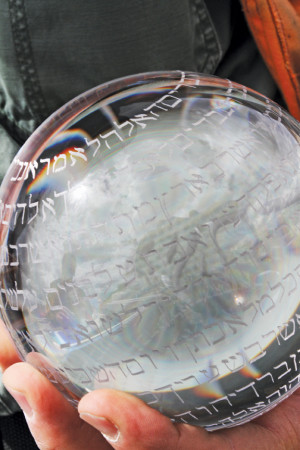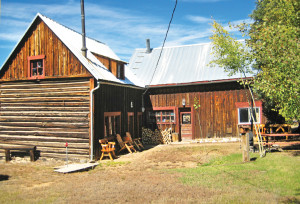By George Sibley
I went to my first NFL football game this October and am trying to figure out how to fit that into the context of my still-evolving but generally mundane sense of reality.
My partner Maryo and I were again spending October in Wisconsin – her home state and home of much of her soul, as the Colorado mountains are home to much of mine. She grew up in Madison, Wisconsin’s capital, but came to know most of the state through college summers working for her father, Robert Gard, who was employed by the University of Wisconsin to travel the state helping people articulate their lives in story, play and verse.
Gard was actually employed by the College of Agriculture, back when farming was still considered to be a culture, before the masters of the universe persuaded America and the world that business is our only culture, and that even our stories and plays are best left to entertainment professionals. He was part of a program called “The Wisconsin Idea,” hatched by Wisconsin’s turn-of-the-century progressive governor “Fighting Bob” LaFollette and his friend Charles Van Hise, president of the university. “The boundaries of the university are the borders of the state,” they proclaimed; the university would provide the education resources necessary to “educate the democracy,” as Alexis de Tocqueville had articulated the challenge of realizing Jefferson’s agrarian republic.
By the time Gard came along in the 1940s, however, UW’s College of Agriculture was already working against “The Wisconsin Idea,” with its research into ways to make agriculture more efficient, productive, profitable, sanitary and, in a word, industrial. Most of what they were coming up with – things like cement floors replacing earth or wood in dairy barns, high-yield hybrid grains, mined fertilizers and the like – favored the economy of scale that large industrial-scale producers could manage. This nudged out of the picture ever more “family farmers” who didn’t, couldn’t, or just wouldn’t get on the industrial “agribusiness” bandwagon.
But what, you are probably wondering, does this have to do with professional football? Okay, I’m getting there. This October, we were given tickets to a Green Bay Packers game. Maryo is a born and bred Packer backer, totally dedicated to this team through decades of losing seasons as well as its more recent successes, but this was only her second live Packers game at the Packers Mecca, Lambeau Field in Green Bay.
This was my first live NFL football game, but – I’m almost embarrassed to admit to CC readers – I’ve been watching professional football for years. I know that any intelligent person ought to firmly oppose the business of professional football – and I do. About the same way I oppose the way agribusiness is destroying agriculture while I buy and eat its cheap food from the supermarket.
So while I think the National Football League as currently owned and operated exemplifies nearly everything that is undermining the American experiment in democracy – that is, all before and surrounding the game itself – once the whistle blows, the game of football becomes an experience independent of everything wrong with the business of football – which is undoubtedly what enables the business, the way cheap food enables agribusiness. The athletic skill and power these “best-in-the-world” athletes display is stunning, even on the small screen (no longer so small). I’m not a team fan, having one band of ever-changing hired players I favor fervently over the 29 other bands of ever-changing hired players; my appreciation of the game is mostly aesthetic. I’ve not seen theater or read a story any more thrilling than a pass play perfectly executed – the receiver gathering in a beautifully thrown ball without having to break stride, or a great open-field run. One realizes that the real objective of this violent sport is to avoid the violence – or transcend it – mustering the skill, grace, cunning and speed to move untouched through a field of potential violence.
Much is made today of the physical danger of the game, the almost unavoidable concussions when players are unable to transcend that violence (which is most of the time), but if I had the talent to be there, I would accept that danger as a reasonable risk for the potential gain. A shortened life in exchange for a possible handful of 60-yard touchdown runs? Or an NFL record for quarterback sacks? Robinson Jeffers spoke of “mortal splendor: meteors are not needed less than mountains.”
That’s all pretty intellectual stuff, however, and going to an actual game puts you in an entirely different world from watching it at home in an easy chair (with a book for the interminable stupid ads). The same incredible feats happen down on the field – with monster “jumbotrons” even doing the instant replays over and over. But in the stands, you become something else yourself – a cell of the single entity that tens of thousands of mostly strangers become when crammed hip-to-hip (Wisconsinites tend to be big, hipwise) in a stadium so vast as to be surreal, an entity with a single voice sounding in an unimaginable roar.
Maryo often reminds me that the Green Bay Packers are a unique part of the NFL. For example, they are the only more-or-less publicly owned NFL team, rather than owned by some rich white person; she herself owns a share. It makes the Packers a tenuous link with the pre-World War II time when every team was just a bunch of guys who loved football (and might have to shell out themselves for the team bus to get to the game). The decree by the NFL oligarchs that there will be no more teams like that – publicly owned teams constitutionally unable to be bought and moved by rich white guys – is just another of the things wrong with the NFL.
The Packers probably play another role for Wisconsin today. The progressive “Wisconsin Idea” has decayed under the juggernaut of the urban-industrial mainstream with its undemocratic inequities and America’s abandonment of the romantic agrarian vision. Its boundaries are now, at best, the boundaries of UW Madison and some of its satellites, and the story that Wisconsin beyond Madison has learned to tell about itself is full of loss, resentment and fear – deep enough today so the people have effectively turned the state over to the Tea Party. The only thing now that brings Wisconsin’s cities and countryside together is the Packers – their boundaries truly are the borders of the state. (And beyond: even Gunnison has a sizeable cell of Packer backers.)
Once inside the stadium, however, I doubt that the experience of being at a Packers game is much different from being at any other mass stadium event. “Crowd” doesn’t begin to encompass the scale of the phenomenon; nor does “mob,” which has connotations of ugly purpose that undermine the fundamental innocent exuberance in the stadium. Baker Brownell, a mid-20th-century American philosopher (and not a fan type of person), coined the term “agglutinate” for tens of thousands of strangers jammed onto Procrustean bleachers (two feet per butt). It’s not a real community, because we have nothing in common outside that gathering, but it’s still a unified mass unified by unqualified support for our band of ever-changing players over another band of ever-changing players. In Lambeau Field you adopt and love whoever is wearing the green and gold, and passionately pray in astonishing roars for their victory over the team wearing other colors.
What to say? It was a lot of fun that Sunday, in that vast stadium, so incongruous a few miles from dairy farmscapes, to be part of a record-setting crowd of 78,200 people from all over Wisconsin, turned into a howling agglutinated “twelfth man” for our eleven on the field through loudspeaker exhortations, over a throbbing background of wordless electronic jungle music, drums and growling guitars – stuff to stomp and sway to as you shouted whatever the loudspeaker exhorted you to shout, for a simple story, unlike those complex never-ending real-time stories. We win or we don’t (we did), the end.
Writing this, back on the banks of the Wisconsin River, quiet save for crow commentary and an occasional gabble from geese downstream, that Sunday seems like something from a parallel universe, a dream maybe. But like all dreams – all of mine anyway – it has its quick-flip dark side, and I can’t help but think of those beautiful stadium scenes in Leni Riefenstahl’s 1930s film Triumph of the Will, where the millions of fans actually became the team, inspirationally quarterbacked by the shouting man with the funny mustache telling the masses their simplified story of loss and resentment. Is a Sunday in the stadiums with the NFL a harmless, even helpful, release of the percolating fear and anger in the state, the nation? Or does it distill and concentrate it? And when we multiply whatever it is by 30 teams, many Sundays and millions of fans – most of them as overwhelmed by our times as the people of Wisconsin – what do we have? Should we be thinking about such questions? Or, as with climate change, just let it go to see what happens?
Meanwhile – how about them Broncos?
George Sibley watches football in Gunnison (but doesn’t have cable).



